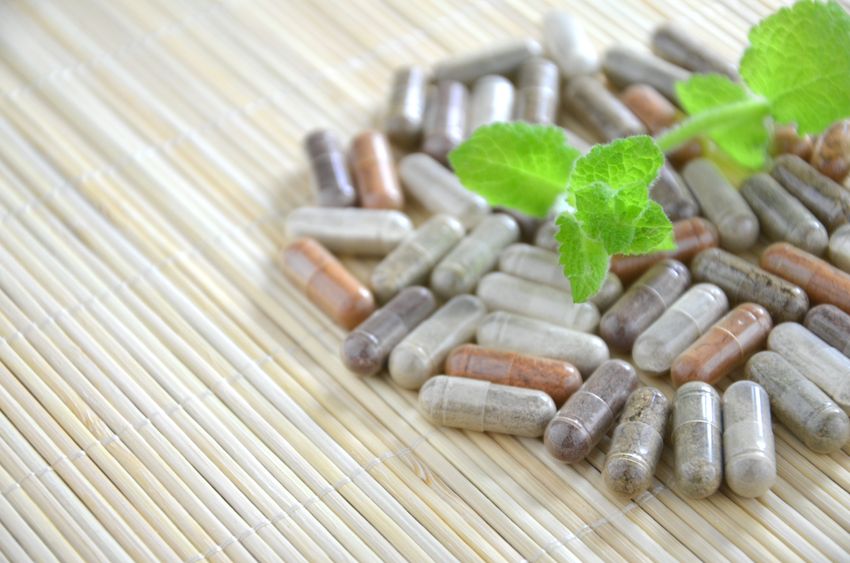| Jump to: | Part 1 | Part 2 | Part 3 | Part 4 |
Part I: What is leaky gut?
The intestinal epithelium is the largest surface in the human body exposed to the external environment. The ability of this epithelial layer to act as a barrier is found to be essential to health. The selective permeability (allow some things to pass, prevent other things from passing) of the intestinal epithelium is a highly regulated process that is part of the normal functioning of the intestinal tract. Amazingly permeability function is achieved through a single layer of epithelial cells and intercellular junctions in between those cells.

Normal intestinal permeability serves the dual roles of acting as a selective filter to nutrients present in the intestine, and as a barrier to harmful, antigenic (immune activating), or pathogenic molecules from passing the intestinal epithelial layer.(1) Intestinal hyper-permeability, also known as ‘leaky gut syndrome’, can result when this highly regulated permeability becomes compromised, allowing potentially harmful or antigenic molecules or pathogens to pass through. There are two routes of passage through the intestinal epithelial lining – paracellular (between two cells) and transcellular (through a cell). Much of the literature on increased intestinal permeability is focused on measuring and understanding paracellular transport; the transport of substances between the epithelial cells. Paracellular transport should not occur; when it does, inappropriate activation of the immune system is often the result. There are several things we know that contribute to leaky gut preceding a disease state. These include:
| Stress | It has been observed that that chronic psychological stress increases intestinal permeability.(3) This of course is implicated in many disease states affected by stress. |
| Exercise | Intensive endurance type exercise has been shown to contribute to intestinal permeability issues. Up to 70% of endurance athletes report symptoms of gastrointestinal upset following a competition or after a long training session(4,5) |
| Drugs | Alcohol,(6) NSAIDs (7) and chemotherapy (8) are all well-documented culprits in increasing intestinal permeability. |
| Bacterial and viral gastroenteritis | E coli associated gastroenteritis causes diarrhea by disrupting the integrity of the intestinal epithelium.(9) Clostridium perfringens enterotoxin which causes food poisoning in humans and has been found to alter paracellular permeability.(10) |
Surgery, total parenteral nutrition, and critical illness such as burns are also associated with loss of selective permeability in the gut.(11) Part two of this article will discuss some of the disease states associated with intestinal hyper-permeability.
References
1. Farhadi, A, Banan, A., Fields, J., Keshavarzian, A. Intestinal barrier: An interface between health and disease. Journ Gastro & hepat. 2003;18:479-497.
2. Laukoetter, M.G., Bruewer, M., Nusrat, A. Regulation of the intestinal epithelial barrier by the apical junctional complex. Curr Opinion Gastroent. 2006;22(2):85-89.
3. Soderholm, J.D., Perdue, M.H. Stress and the gastrointestinal tract II. Stress and intestinal barrier function. Amer Jour Physiol. 2001;280(1):G7-G13.
4. Peters, H., Bos, M., Seebregts, L., Akkermans, L., van Berge, G. et al. Gastrointestinal symptoms in long-distance runners, cyclists, and triathletes:prevalence, medication and etiology. Amer Jour Gastroenterol. 1999;94(6) 1570-1581.
5. Pals, K.L, Chang, R, Ryan, A.J., Gisolfi, C.V. Effect of running intensity on intestinal permeability. J Appl Physiol. 1997;82:571-576.
6. Parlesak, A., Schafer, C., Schutz, T., Bode, C.J., Bode, C. Increased intestinal permeability to macromolecules and endotoxemia patients with chronic alcohol abuse in different stages of alcohol induced liver disease. 2000;32:742-747.
7. Lim, Y., Yang, C. Non-steroidal anti-inflammatory drug induced enteropathy. Clin Endosc. 2012;45:138-144.
8. Keefe, D.M., Cummins, A.G., Dale, B.M., Kotasek, D., Robb, T.A., Sage, R.E. Effect of high-dose chemotherapy on intestinal permeability in humans. Clin Sci (Lond). 1997;92(4):385-389.
9. Shifflett, D.E., Clayburgh, D.R. Koutsouris, A., Turner, J.R., Hecht, G.A. Enteropathogenic E.coli disrupts tight junction barrier function and structure in vivo. Lab Investig. 2005;85:1308-1324.
10. Sonoda, N., Furuse, M., Sasaki, H., Yonemura, S., Katahira, J. Clostridium perfringens enterotoxin fragment removes specific claudins from tight junction strands: evidence for direct involvement of claudins in tight barrier function. J Cell Biol. 1999;147(1):195-204.
11. Crooks, NH, Snaith, C, Webster, D, Gao, F., Hawkey, P. Clinical review: probiotics in critical care. Critical Care 2012;16(6):237-249.
Intestinal Hyper-permeability – Recognizing and Managing a Leaky Gut
Part II What are potential consequences of leaky gut?

Intestinal hyper-permeability has been associated with several disease states. In some cases the permeability is suspected to contribute to the disease whereas in other cases the intestinal wall and permeability is thought to be damaged through the disease process itself.
Liver cirrhosis is an example in which increased intestinal permeability precedes and contributes to the disease process and its many serious complications.(1) There is strong evidence that gut dysfunction, particularly the breakdown of healthy permeability, has toxic effects on the liver.(2) Liver pathology is perhaps the most extensively studied and most convincing association with ‘leaky gut’. IBS, a very common gastrointestinal condition with multiple etiologies, is characterized by an increase in intestinal permeability.(3) It remains unclear whether this is an early manifestation and possible causative factor of IBS, or if it is a result of the disease process itself.(3) Autoimmunity – A newer model of autoimmune development involves the presence of leaky gut to allow antigen (inappropriate immune activator) exposure to the immune cells residing within the gut, thereby triggering an inappropriate immune response(4,5) Ankyosing spondylitis (AS) is also thought to have increased intestinal permeability precede the onset of the disease state due to the presence of intestinal hyperpermeability in close relatives.(6) 68% of AS patients tested positive for increased intestinal permeability as well as 60% of close relatives.(6) Similarly to AS, intestinal hyper-permeability in Crohn’s disease is thought to be an important part of the pathophysiology since intestinal barrier dysfunction is found in close relatives.(7) Spouses of those with CD have been found to have increased intestinal permeability as well, suggesting a strong environmental component.(7) The hypothesis for Food allergies development is that increased intestinal permeability allows antigens from food to travel paracellularly through the damaged tight junction’s, thereby exposing the antigen to the immune system and subsequent development of an antigen-specific immune response.(8) Although further research is warranted, studies have shown intestinal permeability to be a direct consequence of allergic reactions,(9) and is present in both asthma (10) and eczema patients.(11) Part three and four of this article will discuss testing methods and treatment for leaky gut.
References
1. Assimakopoulos, A.F., Tsamandas, A.C., Tsiaoussis, G.I., Karatza, E., Triantos, C. et al. Altered intestinal tight junctions’ expression in patients with liver cirrhosis: a pathogenetic mechanism of intestinal permeability. Eur J Clin Invest. 2012;42(15):439-446.
2. Soeters, P.B., Luyer, M.D., Greve, J.W., Buurman, W.A. The significance of bowel permeability. Curr Opin Clin Nutr Metab Care. 2007;10:632-638.
3. Camilleri, M., Madsen, K., Spiller, R., Van Meerveld, B.G., Verne, G.N. Intestinal barrier function in health and gastrointestinal disease. 2012;24:503-512.
4. Fasano, A., Shea-Donohue, T. Mechanisms of disease: the role of intestinal barrier function in the pathogenesis of gastrointestinal autoimmune diseases. Nature Clin Prac Gastroenterol Hepatol. 2005;2(20):416-422.
5. Fasano, A. Leaky gut and autoimmune diseases. Clinic Rev Allerg Immunol. 2012;42:71-78.
6. Martinez-Gonzalex, O., Cantero-Hinojosa, J., Paule-Sastre, P., Gomez-Magan, J.C., Salvatierra-Rios, D. Intestinal permeability in patients with ankylosing spondylitis and their healthy relatives. 1994;33:644-647.
7. Gibson, P.R. Increased gut permeability in crohn’s disease: is TNF the link? Gut. 2004;53:1724-1725.
8. Mishra, A., Makharia, G.K. Techniques of functional and motility test: how to perform and interpret intestinal permeability. 2012;18(15):443-447.
9. Perrier, C., Corthesy, B. Gut permeability and food allergies. Clin Experiment Allerg. 2010;41:20-28.
10. Hijazi, Z., Molla, A.M., Al-Habashi, H., Muawad, W., Sharma, P.N. Intestinal permeability is increased in bronchial asthma. Arch Dis Child. 2004;89:227-229.
11. Caffarelli, C., Cavagni, G., Mensies, I.S., Bertolini, P., Atherton, D.J. Elimination diet and intestinal permeability in atopic eczema: a preliminary study. 1993;23(1):28-31.
Intestinal Hyper-permeability – Recognizing and Managing a Leaky Gut
Part III : Testing for leaky gut
Part II of this article discussed several diseases science has drawn strong connections between leaky gut and the disease in question. Part III discusses a readily available, safe, and inexpensive test that can detect leaky gut, as well as visit one possible natural medicine for leaky gut treatment; the amino acid L-glutamine.
Testing
Measuring the presence of increased intestinal permeability and severity is done through the ingestion of substances not metabolized by the human body. There are several types used, typically sugar molecules such as rhamnose, sucralose, lactulose or mannitol. Each of these substances are non-toxic and are excreted through the kidneys allowing for collection and measurement in urine. The most commonly used test in clinical practice is the lactulose-mannitol test. Lactulose, a dissaccharide that is typically poorly absorbed, will make it through the intestinal barrier only if leaky gut exists. Mannitol, a monosaccharide, is well absorbed through transcellular transport. This provides two pieces of information; paracellular “leaky gut” transport vs transcellular “proper absorption”.(1) The lactulose/mannitol test can assess permeability severity and this is sometimes associated with the severity of disease such as in Crohn’s and critically ill patients.(2) There are many treatments outside the scope of this article that may have merit in treating intestinal hyper-permeability. We focus on the core treatments with reasonably adequate literature to support their use.
Treatment – Glutamine
Tight junction stability is affected by ATP levels within the intestinal cells.(3) The mechanism of glutamine’s effect on intestinal permeability is the increased ATP availability for proper tight junction structure and function. Glutamine may also be acting to increase glutathione levels within the intestinal cells to help protect the tight junction structures from reactive oxygen species.(4) Oxidative stress is an important mechanism of increasing intestinal permeability seen in animal models and chemotherapeutic agents.(5) Although few human trials to date have shown glutamine’s direct effect on intestinal permeability, it has been shown to have beneficial effects on intestinal permeability related to chemotherapeutic use,(5) crohn’s disease,(6) and potentially IBS.(7) In Crohn’s disease dosages of 0.5g/ kg of body weight were used to obtain improvements in intestinal permeability function.(6)
References
1. Mishra, A., Makharia, G.K. Techniques of functional and motility test: how to perform and interpret intestinal permeability. 2012;18(26):443-447.
2. Soeters, P.B., Luyer, M.D., Greve, J.W., Buurman, W.A. The significance of bowel permeability. Curr Opin Clin Nutr Metab Care. 2007;10:632-638.
3. Hayashi, M., Sakai, T., Hasegawa, Y., Nishikawahara, T., Tomioka, H., Lida, A. et al. Physiological mechanism for enhancement of paracellular drug transport. J Control Release. 1999;62:141-148.
4. Vilela, E.G., Ferrari, M., Torres, H., Pinto, A.G., Aguirre, A. et al. Influence of Saccharomyces boulardii on the intestinal permeability of patients with Crohn’s disease in remission. Scand Journ Gastroenterol. 2008;43:842-848.
5. Maeda, T., Miyanzono, Y., Ito, K., Hamada, K., Sekine, S., et al. Oxidative stress and enhanced paracellular permeability in the small intestine of methotrexate-treated rats. Cancer Chemother Pharmacol. 2010;65:1117-1123.
6. Benjamin, J., Makharia, G., Ahuja, V., Rajan, K.D., Kalaivani, M. et al. Glutamine and whey protein improve intestinal permeability and morphology in patients with crohn’s disease: a randomized controlled trial. 2012;57:1000-1012.
7. Camilleri, M., Madsen, K., Spiller, R., Van Meerveld, B.G., Verne, G.N. Intestinal barrier function in health and gastrointestinal disease. 2012;24:503-512.
Intestinal Hyper-permeability – Recognizing and Managing a Leaky Gut
Part IV: Integrative treatment of leaky gut

Probiotics
It is difficult to dispute the positive effect of probiotic supplementation on intestinal health, but the mechanism of intestinal health promotion is still in question. The proposed effects of supplementing with probiotic organisms is to restore normal intestinal permeability, regulate the host’s microflora, and help to balance molecules that may contribute to inflammation.(1) The research on improving intestinal permeability is still conflicting. This will likely be clarified over the next years with further testing on different strains of organisms in different conditions associated with intestinal permeability. Some studies on probiotic effects on states associated with intestinal hyper-permeability:
Melatonin has been shown to improve symptoms of IBS, independent of its effects on sleep, anxiety or depression, when given at doses of 3mg in women with IBS in a double blinded placebo controlled trial..(2) Animal studies shown melatonin to reduce intestinal permeability.(3)
Fibre – The bacterial in our colon ferment the fibre in our diet and produce short chain fatty acids as by products (butyrate, propionate, and acetate). This waste product of our bacterial flora is in fact the preferred and ideal fuel for the cells of our colon! Adequate butyrate supply is very beneficial for the health of our intestinal epithelium.(4,5)
Dietary Strategies – A selection of dietary approaches, most notably avoiding specific foods for the purpose of avoiding proteins within them that can act to aggravate our bodies immune system, are proving to be incredibly useful in the treatment of many of the diseases associated with leaky gut syndrome. The science growing in support of such strategies is occurring at a rapid pace. Please stay tuned for future articles addressing dietary approaches for improving leaky gut and associated autoimmune diseases.
References
1. Isolauri, E., Rautava, S., Salminen, S. Probiotics in the development and treatment of allergic disease. Gastroenterol Clin N Am. 2012:747-762.
2. Lu, WZ., Gwee, KA, Moochhalla, S., Ho, KY. Melatonin improves bowel symptoms in female patients with irritable bowel syndrome: a double-blind placebo-controlled study. Aliment Pharmacol Ther. 2005;22:927-934.
3. Sommansson, A., Nylander, O., Sjoblom, M. Melatonin decreases duodenal epithelial paracellular permeability via nicotinic receptor-dependent pathways in rats in vivo. Journ Pineal Res.[serial on the internet] 2012 Aug [cited 2013 Feb 27]; 1-10. Available from: http://www-ncbi-nlm-nih-gov.ezproxy.lib.ucalgary.ca/pubmed/23009576
4. Wang, H., Wang, P., Wang, X., Wan, Y, Liu, Y. Butyrate enhances intestinal epithelial barrier function via up-regulation of tight junction protein claudin-1 transcription. 2012;57:3126-3135.
5. Ferreira, T.M., Leonel, A.J., Melo, M.A., Santos, R., Cara, D.C. et al. Oral supplementation of butyrate reduces mucositis and intestinal permeability associated with 5-flourouracil administration. 2012;47:669-678.
